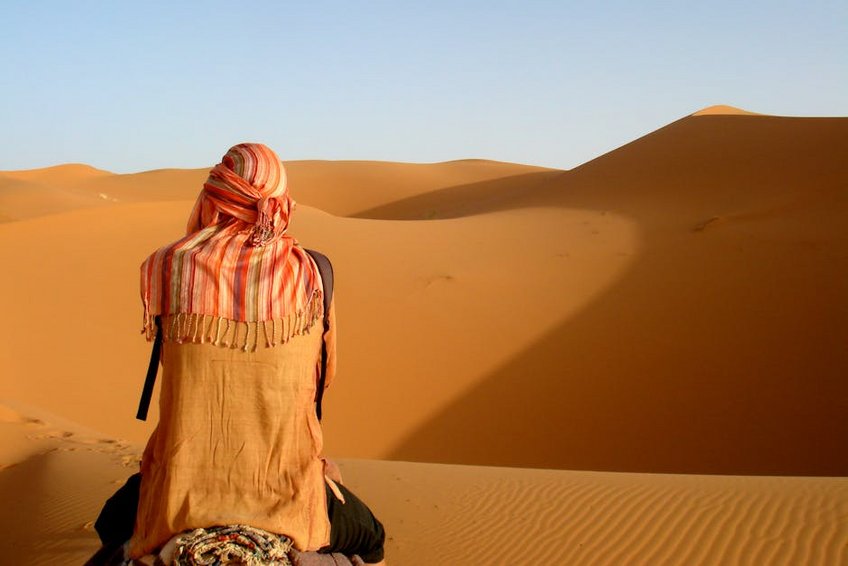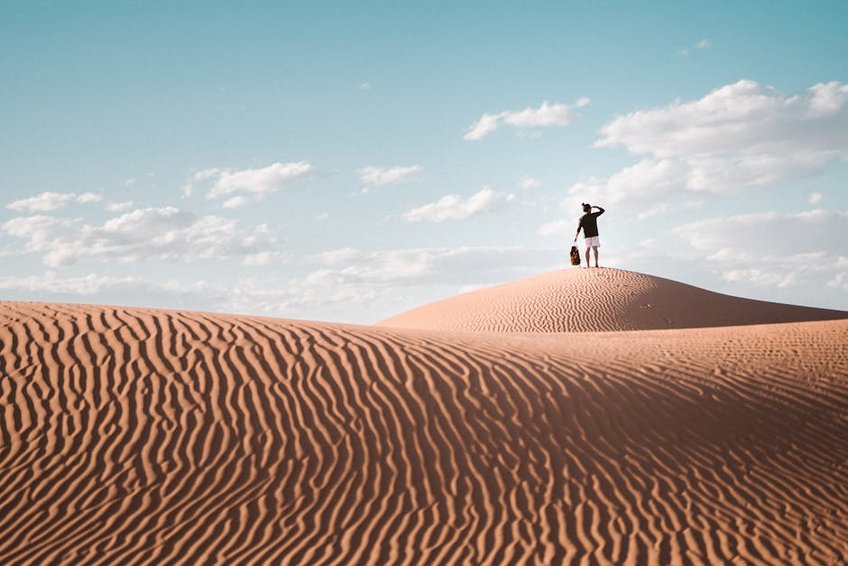Morocco Sahara Desert Stargazing: Ultimate Night Sky Experience
Morocco Sahara Desert stargazing offers unparalleled celestial views under some of the world’s darkest skies, far from urban light pollution. This experience combines ancient Berber astronomy traditions with modern observation techniques across vast ergs and hamadas. You will discover essential planning tips, seasonal timing, and cultural insights for maximizing your astronomical adventure.
Essential Sahara Desert Information
The Sahara Desert spans approximately 3.6 million square miles across Northern Africa, with Moroccan sections featuring iconic ergs like Chebbi and Chigaga. These sand seas provide ideal stargazing conditions with minimal atmospheric interference and consistently clear nights. Desert altitudes range from 1,500 to 3,500 feet, enhancing visibility through thinner, drier air layers.
Morocco maintains stable political conditions with established tourism infrastructure in desert regions like Merzouga and Zagora. Annual rainfall rarely exceeds 3 inches in these areas, ensuring predominantly cloud-free observing conditions. Nighttime temperatures fluctuate dramatically between seasons, requiring appropriate thermal protection.
Geographic Regions and Characteristics
Different Sahara zones offer varied stargazing environments and accessibility levels.
- Erg Chebbi near Merzouga features towering 500-foot dunes creating dramatic silhouettes against starry backgrounds, with luxury camps providing telescope facilities.
- Erg Chigaga presents more remote wilderness conditions requiring 4×4 access, delivering exceptional darkness levels for Milky Way photography.
- Hamada du Drâa offers rocky plateau landscapes with stable ground for telescope setup, though fewer accommodation options exist.
- Budget options at $50-100 nightly include basic Berber camps with shared facilities, self-guided observing using smartphone apps, and group transportation from Marrakech.
- Mid-range experiences costing $150-250 feature private tents with heating, beginner astronomy equipment rental, and knowledgeable guides for constellation identification.
- Premium packages from $300+ provide luxury camps with telescope stations, astrophotography instruction, gourmet dining, and private 4×4 transfers from major cities.
- Moroccan National Tourism Office
- Sky & Telescope Astronomy Magazine
Climate and Astronomical Conditions
Sahara Desert atmospheric conditions create premium stargazing opportunities year-round. Humidity levels typically remain below 20 percent, drastically reducing atmospheric distortion for clearer planetary and deep-sky observation. The region averages 330 clear nights annually, with peak transparency occurring between October and April.
Light pollution maps show virtually zero artificial light interference beyond desert perimeter villages. This darkness quality enables naked-eye visibility of magnitude 6.5-7.0 stars under optimal conditions. Seasonal variations affect both temperature comfort and specific celestial object visibility throughout the year.
Historical and Cultural Astronomy
Berber communities have utilized stellar navigation for trans-Saharan trade routes across millennia. Indigenous astronomy knowledge incorporates star patterns for seasonal migration timing and religious observance periods. Modern desert guides often share this ancestral wisdom during evening observation sessions.
European astronomical societies frequently conduct research expeditions in the Moroccan Sahara due to superior seeing conditions. Several international dark sky preservation initiatives recognize the region’s significance for professional and amateur astronomy. These factors combine to create rich cultural layers beneath the spectacular celestial displays.

Alt: “sahara-desert-night-sky-milky-way-constellations”
Planning Your Morocco Sahara Desert Stargazing
Successful Morocco Sahara Desert stargazing requires strategic timing between October and April when temperatures moderate and celestial objects align optimally. This period avoids extreme summer heat while maximizing Milky Way core visibility and meteor shower opportunities. You should book desert camps three to six months early for prime astronomical events.
Budget allocation must account for specialized guides, equipment transport, and premium camping locations with minimal light interference. Expect higher costs during November and March when European school holidays increase demand. Shoulder months like October and April offer better pricing with nearly identical viewing conditions.
Physical preparation should include cardiovascular conditioning for dune hiking and acclimatization to arid environments. Mental readiness involves understanding basic celestial navigation and patience for atmospheric conditions. These elements ensure you extract maximum value from your investment.
Best Time to Visit for Stargazing
Visit between October and April for ideal stargazing conditions with temperatures ranging 50-75°F (10-24°C) during observation hours. December and January offer the longest nights but coldest conditions, dipping to 32°F (0°C) after midnight. These months provide excellent Orion Nebula and Andromeda Galaxy visibility.
Shoulder seasons in October and April deliver comfortable 60-80°F (15-27°F) evening temperatures with minimal tourist crowds. Spring months feature galaxy season while autumn showcases the Milky Way core positioned perfectly above the horizon. Book campsites early for meteor shower peaks in August and December.
Budget Planning and Costs
Desert stargazing expenses vary significantly based on accommodation style and guide services.
Essential Preparation Checklist
Pack thermal layers for 30°F temperature drops after sunset, red-light headlamps for night vision preservation, and sturdy footwear for dune walking. Bring binoculars or rent quality telescopes locally for enhanced deep-sky object observation. Include smartphone astronomy apps like Star Walk for real-time celestial identification.
Secure comprehensive travel insurance covering emergency desert evacuation and equipment protection. Obtain necessary visas for your nationality before arrival, though many Western passports receive 90-day visa-free entry. Complete any required vaccinations and carry adequate prescription medications for remote areas.
Top Astronomical Attractions and Activities
Moroccan Sahara skies reveal breathtaking celestial phenomena unavailable in light-polluted regions. The Milky Way core glows vividly from March through October, arching directly overhead during summer months. Planetary observation reaches peak clarity during opposition periods, while meteor showers like the Geminids and Perseids create spectacular December and August displays.
Professional astronomy tours combine telescope observation with cultural experiences like Berber music around campfires. These guided sessions typically identify 15-20 constellations while explaining their mythological significance across different cultures. Many operators now include basic astrophotography instruction for capturing the magical desert nightscapes.
Must-See Celestial Events
The Geminids meteor shower peaks around December 13-14, producing up to 120 multicolored meteors hourly under Sahara conditions. January’s Quadrantids deliver another intense shower with 40-100 meteors per hour during their brief peak. These events coincide with excellent winter constellation visibility including Orion, Taurus, and Gemini.
Planetary oppositions occur throughout the year, with Jupiter and Saturn reaching optimal visibility during summer months. The Milky Way core becomes prominently visible from February through October, positioned perfectly for photography from March to September. Lunar eclipses and planetary conjunctions create additional highlights for timing your visit.
Hidden Gems and Local Tours
Merzouga’s secret observation points include remote dune areas accessible only by experienced guides, offering complete isolation from other tourists. These locations provide unparalleled darkness levels for observing faint deep-sky objects like the Andromeda Galaxy and Orion Nebula. Local operators know optimal spots for each celestial event throughout the year.
Berber-operated astronomy tours incorporate traditional navigation techniques using star patterns for desert wayfinding. These experiences often include tea ceremonies while discussing how ancestral knowledge aligned with celestial cycles. Smaller operators typically provide more personalized attention than larger commercial tours.
Astrophotography Techniques for Desert Conditions
Desert astrophotography requires fast wide-angle lenses (f/2.8 or faster), sturdy tripods, and intervalometers for long exposures. Shoot during moonless nights for maximum star visibility, using ISO settings between 1600-3200 for balanced noise performance. Frame compositions with foreground elements like dunes or desert vegetation for scale and interest.
Advanced techniques include star trail photography using 30-second exposures over several hours, blended in post-processing. Time-lapse sequences capture celestial motion across the Sahara sky, particularly dramatic during meteor showers. Always carry extra batteries since cold desert nights rapidly drain power reserves.
Practical Travel Logistics and Accommodation
Reaching Sahara stargazing locations typically involves flights to Casablanca or Marrakech followed by overland travel. Domestic flights connect to Ouarzazate, while private transfers or rental cars complete the journey to desert gateways. Allow 2-3 days for acclimatization and travel before beginning serious observation sessions.
Desert accommodation ranges from basic Berber tents to luxury camps with private bathrooms and heating systems. Mid-range options typically offer the best value, balancing comfort with authentic experience. Booking directly with established camps often secures better rates than through international platforms.
| Accommodation Type | Features and Amenities | Price Range (USD/night) |
|---|---|---|
| Basic Berber Camp | Shared facilities, group meals, camel tours | $50-80 |
| Standard Desert Camp | Private tents, basic astronomy equipment, guide services | $100-180 |
| Luxury Astronomy Camp | Heated tents, premium telescopes, astrophotography instruction | $250-400 |
| Eco-Lodge Option | Sustainable design, pool, restaurant, telescope rental | $150-220 |


